What is Architectural Street Photography ?
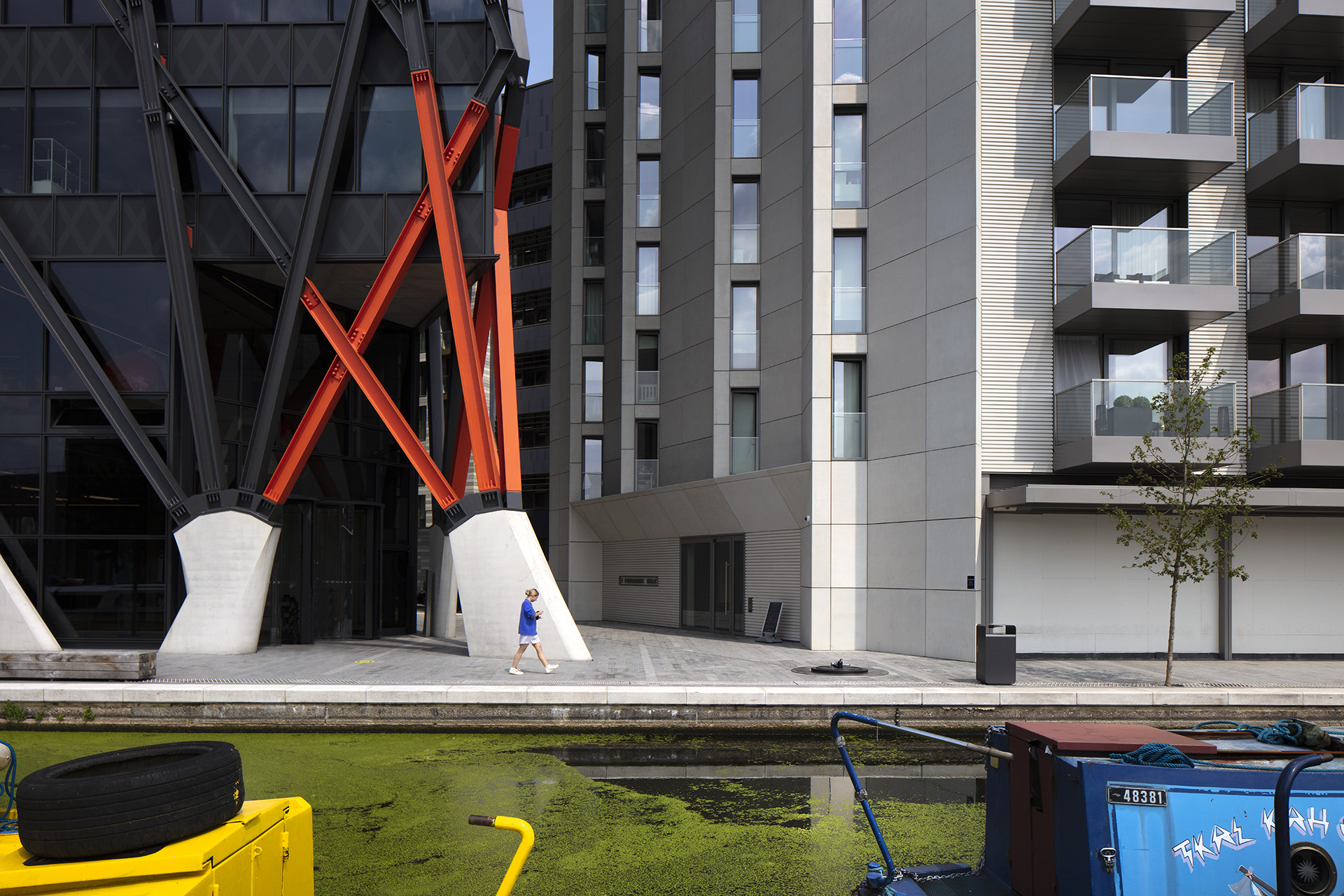
Architectural Street Photography conveys the built environment, inhabited and brought to life with people. Pic: Nick Turpin
The practice of Street Photography seeks to capture the unusual in the everyday in an observed and candid way. Street Photographs often have no specific subject, they capture a moment of life in a public place. Traditionally Street Photographers have focused on people and their actions and interactions, but rarely does traditional Street Photography pay much attention to the public realm itself, the buildings, structures and spaces we inhabit and pass through.
The idea of a public place, owned by nobody, shared by us all, with equal rights to access it, use it and record it, is central to a free and democratic society. The idea that what happens in a public place should be a matter of public record, enables our free press and our ability to vote for leaders and parties and their policies in full knowledge of the facts. Street Photography rides on the coat tails of this freedom, photographs are made of strangers without their permission. Often they are a little subversive, they show an unfortunate moment or take a wry view of someones actions or put elements together to create a meaning that wasn’t there. This has raised questions of privacy, do you have any right to privacy when you are in a public place? Some suggest there exists an unspoken contract whereby we exchange a little of our privacy in a public place for the mutual societal benefit of living in a free and democratic nation where the state of public life is free to be recorded and presented and examined.
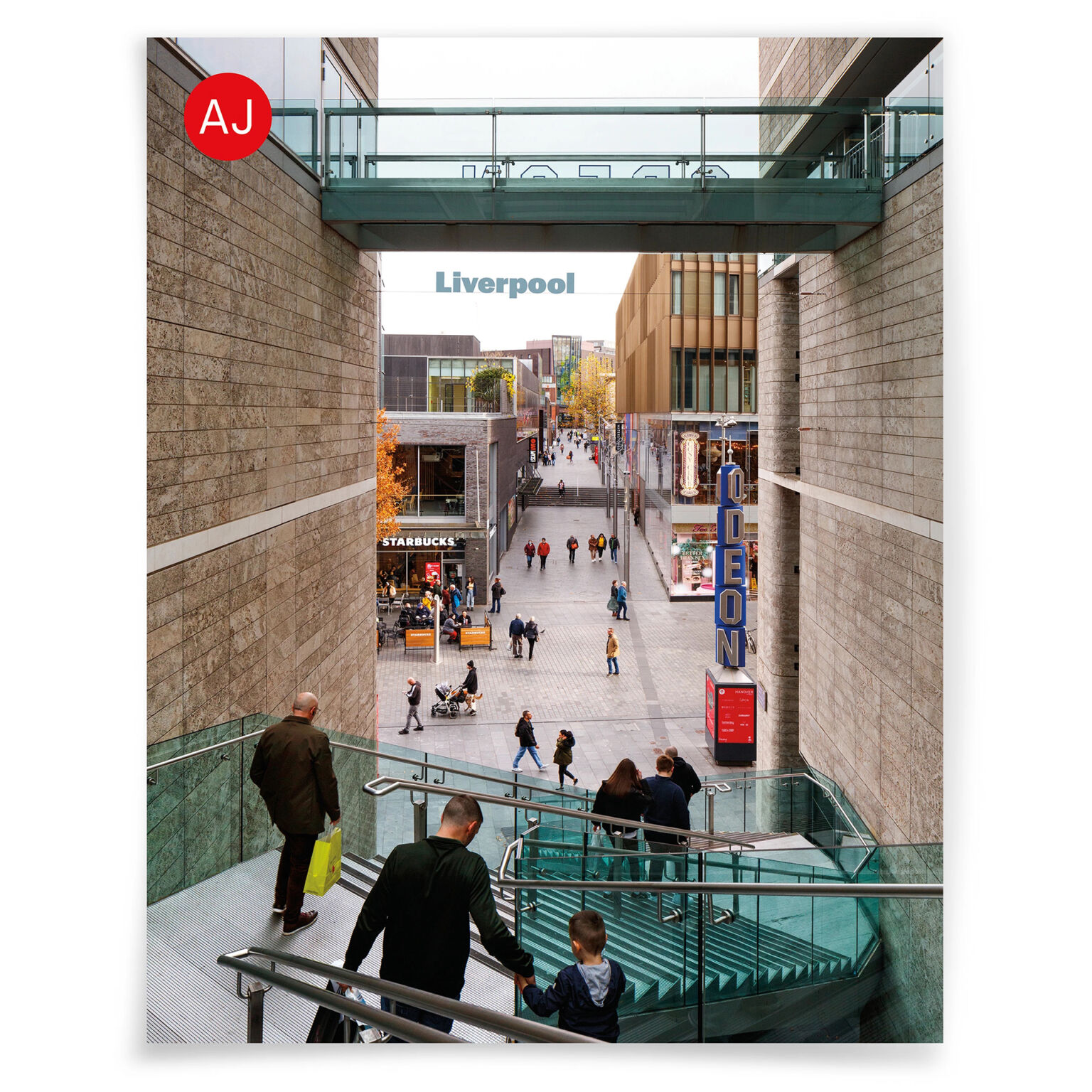
The Cover of Architects Journal showing the Liverpool One development populated and in use. Pic: Nick Turpin
Architectural Street Photographs typically display strong, carefully organised compositions of architecture with perfect verticals, with beautifully arranged moments of human interaction. The Architectural Street Photographer will likely work in the street with handheld tilt shift lenses on a high quality camera capable of retaining detail in a broad scene.
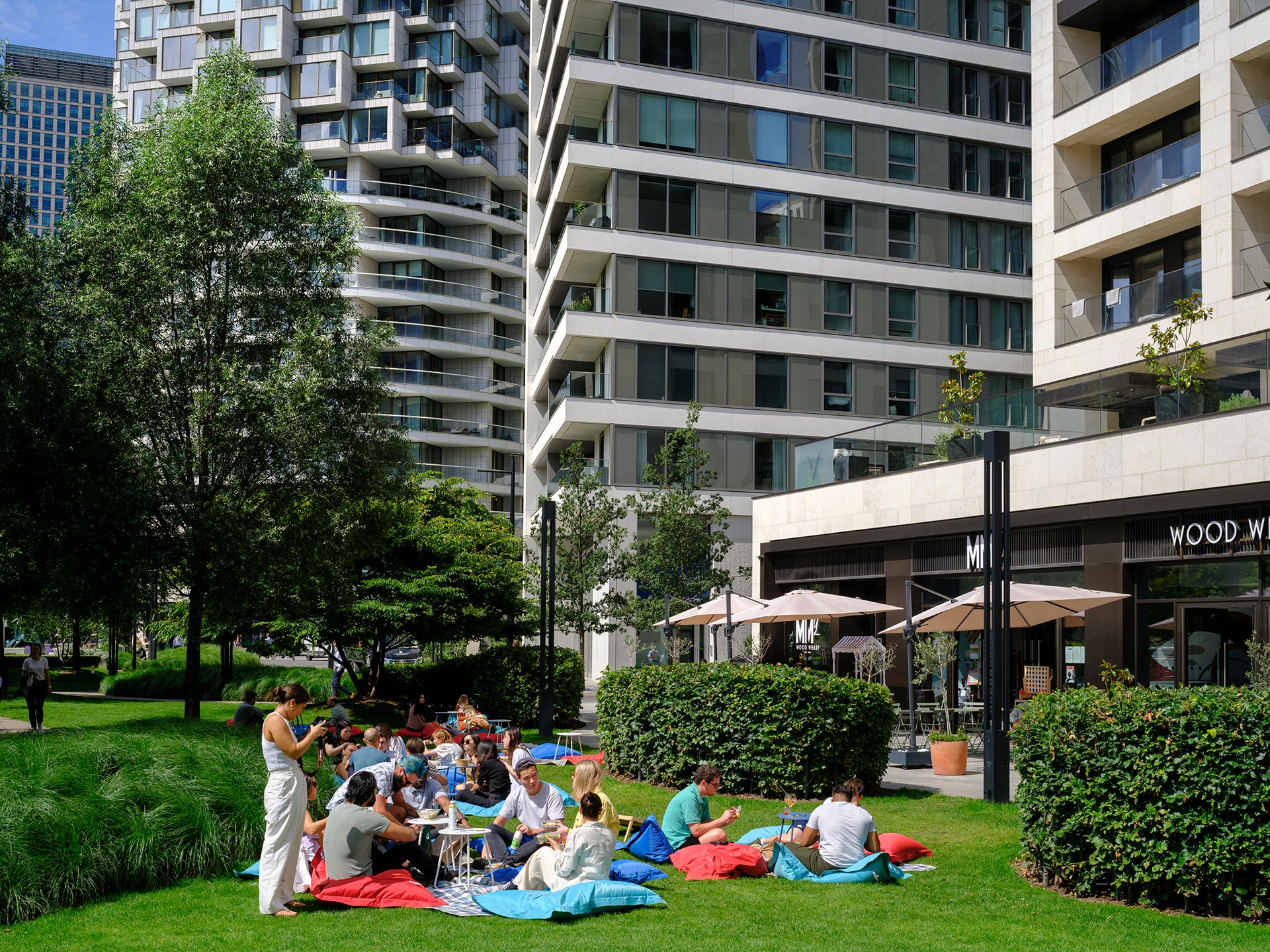
The Canary Wharf development in London Docklands balancing people and architecture in the frame. Pic: Nick Turpin
Roots and History of Architectural Street Photography
Gustave Caillebotte was a French Impressionist painter who was known for his early interest in photography as an art form. He aimed to paint ‘reality as it existed’ and as he saw it. His interest in the new technology of photography may be responsible for the appearance of cropping and zooming in some of his works. People appear cropped in half at the edge of a frame or the scene appears to have compression as if seen through a longer lens. Caillebotte’s famous painting ‘Paris Scene, Rainy Day’ is notable for its flat colours and photo-realistic effect that give the painting a very modern and unromantic look. We see a wet dull day with figures arranged throughout the space and views down several distant streets. The main point of interest in this painting is the perspective used, the horizon is above centre point but the verticals of all the buildings are perfectly upright as if viewed through a shifted bellows camera or a modern tilt shift lens, as used by architectural photographers.
In many ways Caillebotte could be considered a Street Photographer with a paint brush with the eye of an architect for buildings.
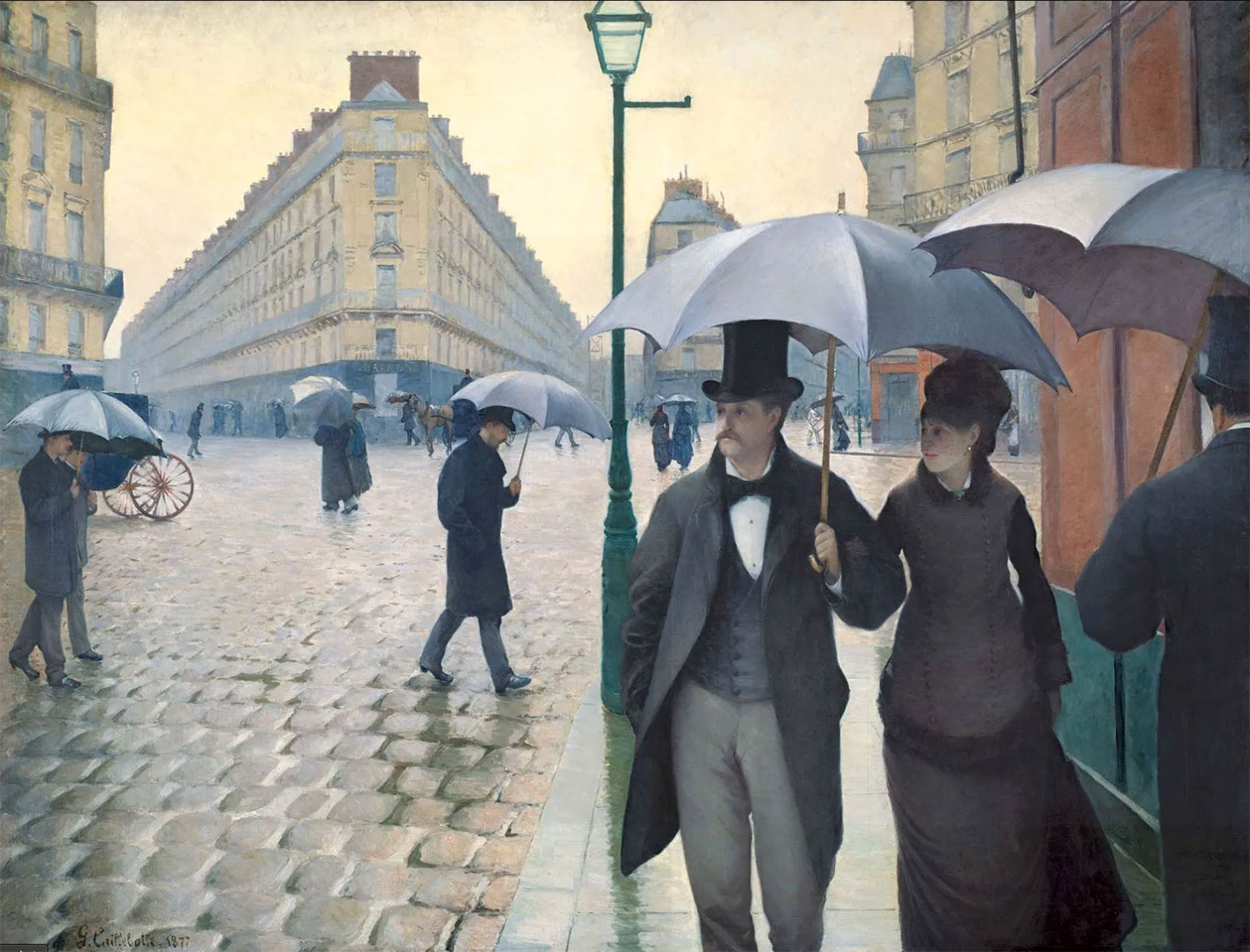
Paris Street, Rainy day 1877.
Manplan was conceived as a survey of architecture in late 1960s Britain. Published by The Architectural Review from September 1969 it was dedicated to “questioning the ideals of progress and examining the failures of its postwar promise”. What distinguishes the Manplan project, which ran over eight issues of the journal between 1969 and 1970, is the choice to employ leading photojounalists and street photographers such as lan Berry, Patrick Ward and Tim Street-Porter to articulate, rather than just illustrate, the theme of each issue. The resulting imagery was like nothing that had ever appeared on the pages of the The Architectural Review.
One of the photographers tasked was the Street Photographer Tony Ray Jones and the resulting images combining tableau of figures with architectural structures and spaces could be considered to be the earliest Architectural Street Photography.

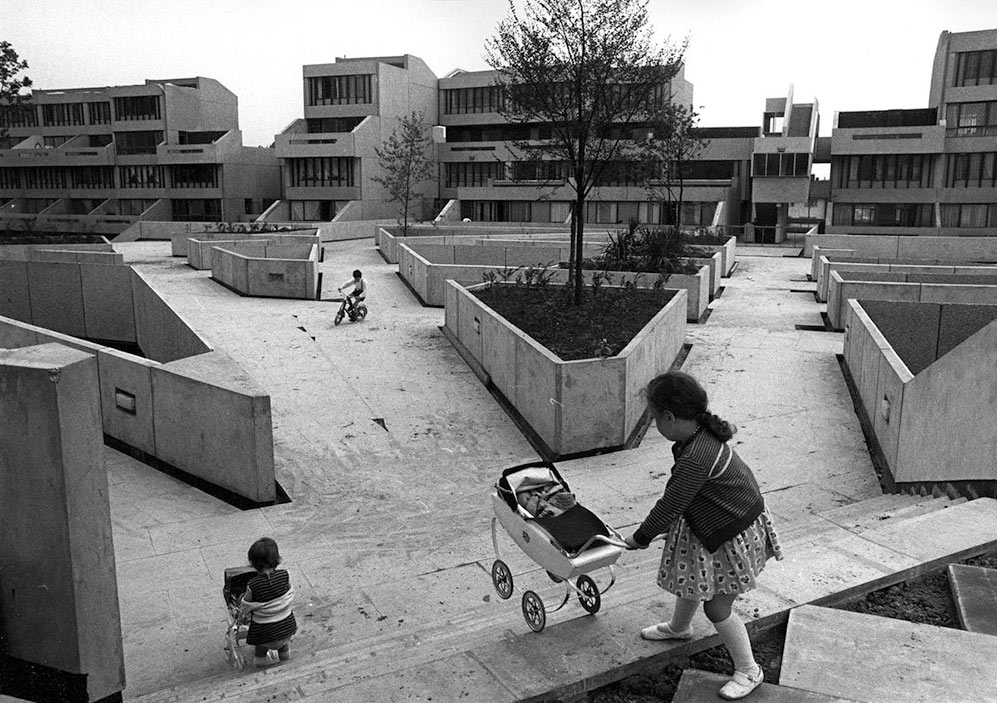

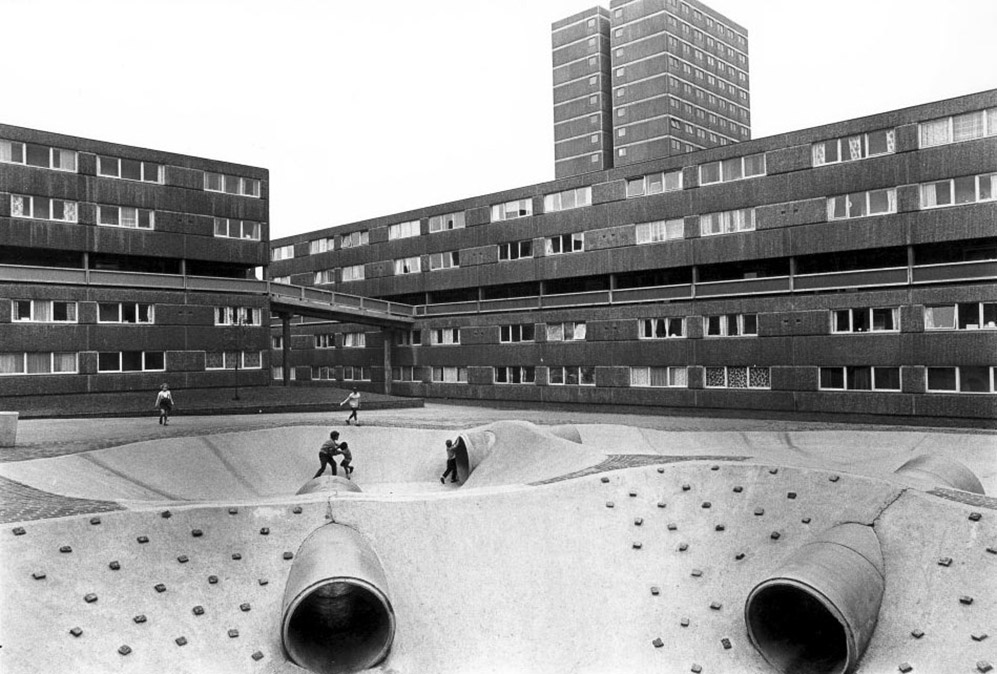

All images Tony Ray Jones

